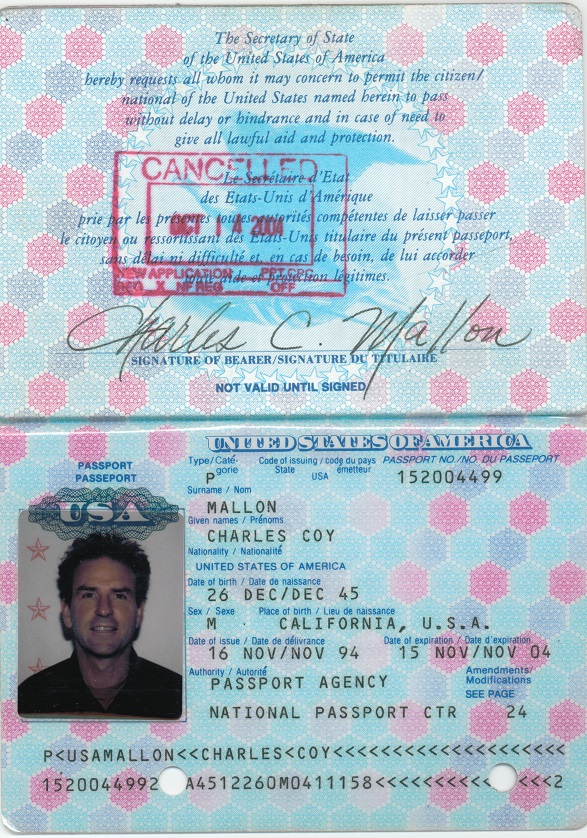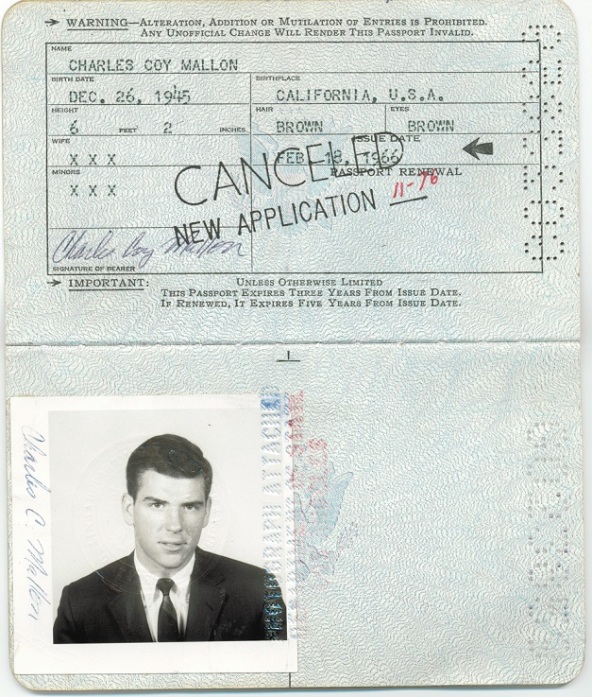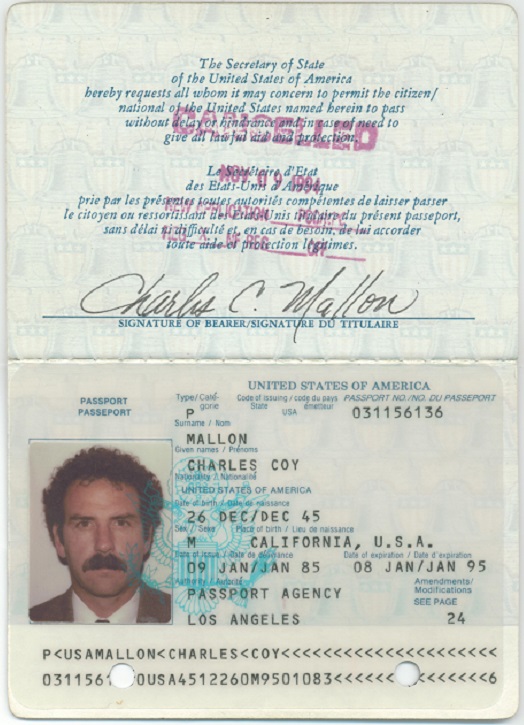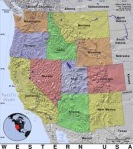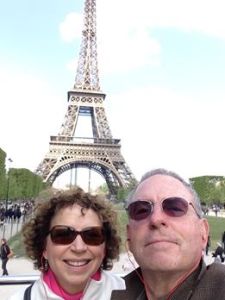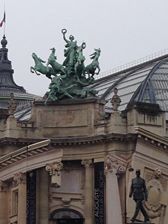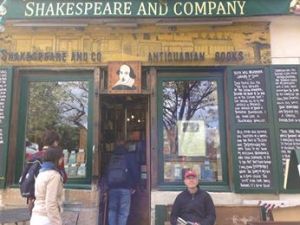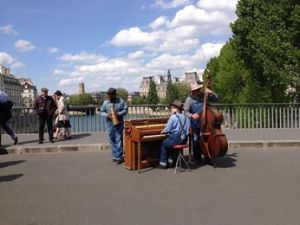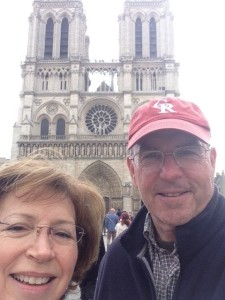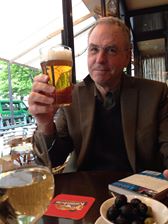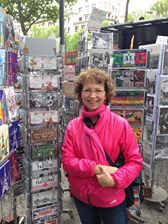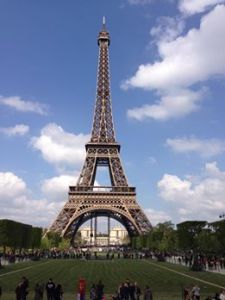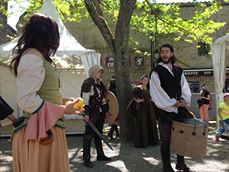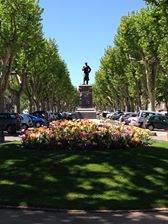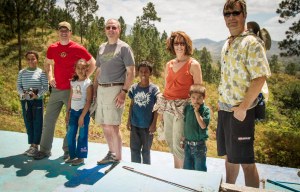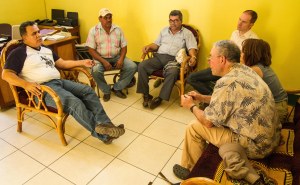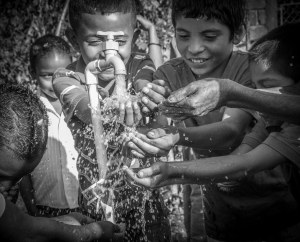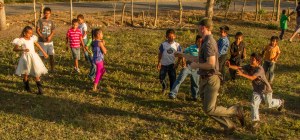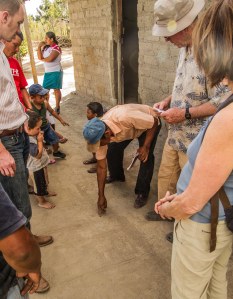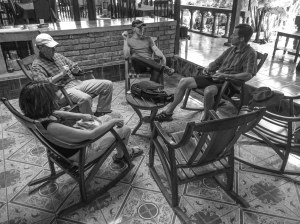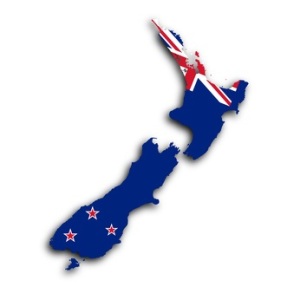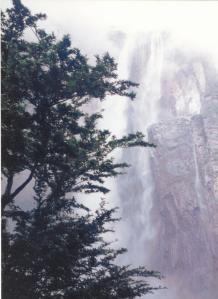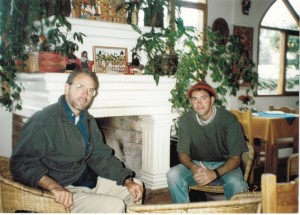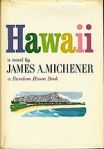In 1996 my son Timothy followed in his father’s footsteps and joined the Peace Corps. In the spring of that year he headed off for three months of “in-country” training to prepare for a two-year assignment in that high altitude, South American country. Having been a volunteer myself 28 years earlier in Venezuela, and later obtaining a degree in Latin American Studies, I was looking forward to visiting him down there once he got settled. Here is an account of my first visit.
Thursday, September 26, 1996

Tim and me at lunch first day in Cochabamba
I left work at mid-day to catch a 2:45 p.m. flight to Dallas. From there I will go to Miami and finally to La Paz, Bolivia where I will arrive at 6:30 a.m. local time. Tim has a ticket waiting for me at the LAB office in the La Paz airport that will take me to his nearest airport, Cochabamba, later in the morning. I have two bags weighing 90 lbs. and about 30 lbs. more in a backpack filled with gifts that Tim requested, so I am concerned about getting everything through customs.
Friday, September 27
I am sitting in the La Paz airport awaiting the departure of my flight to Cochabamba. I dozed off a little last night, but really got very little sleep. However, I feel pretty well right now, we’ll see how it goes when the adrenaline wears off.Customs was not a problem, as they only gave my large bag a cursory look. So far the Bolivians are very attentive and helpful, more so than I have noted in other Latin countries. My heavy bags finally caught up with me as I had to pay a 41 Bolivianos ($8.00) charge for 20 kilos of extra weight.
Anyway, I arrive in Cochabamba at 9:30 a.m. and was greeted by a very happy and skinny Tim. We checked into the three-star Empeador Hotel, where Tim’s Peace Corps group had been booked when they started training. We spent the afternoon touring the town and climbed a nearby

The “Cristo Rey” statue
hill on which the “Cristo Rey” statue is located. This piece is a copy of the one found in Rio, but the local organizers made sure it was a few inches taller. From the top of the hill we had an excellent view of the town and the mountains beyond, including 16,000” Tunari, which Tim had earlier climbed. The steep ascent left both my legs shaking, while little kids scampered up and down with little apparent effort.
Later we visited Tim’s Cochabamba weekend digs and got an early start on what proved to be a great evening at a Peace Corps Volunteer party with beer, cacha, visits to various bars, beer, coca leaves and great conversations. It only took me a short time to forget all the years that had passed since my service, I was back in the Peace Corps again. Aside from seeing Tim, this may have been the highlight of my trip. I finally stumbled
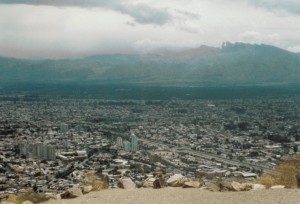
View of Cochabamba, Bolivia 1996
back to my room around 3:00 a.m.
Saturday, September 28
Tim came by at 8:00 a.m. to pick me up to see Cochabamba’s “Cancha”, their open air Saturday market. After some discussion and considered appraisal of our physical condition, we decided to blow off the Market and head down on a “trufi” to Tim’s work site, Tarata.
Before leaving, however, we decided to buy plane tickets to leave Monday morning for Chile. We opted to go there my first week down, as there are a lot of fiestas happening the second week in some of the Bolivian towns we are planning to visit.
After the 45 minute trufi ride we arrived in Tarata. The pueblo consists of

Peace Corps Party in Cochabamba
cobbled streets with adobe walls. As we are still in the dry season, there is a lot of dust. The pueblo is exceptionally clean and many of the younger people call out “Timo, como estas” as we walk by.After a well deserved nap, we took a walk in the campo to appreciate the beautiful, Southern California type landscape. In the evening I tried my first chicha, a corn and wheat liquor that reminds me of limeade with alcohol. Back to Tim’s room for an early night.
Sunday, September 29
After a tough night for me on Tim’s hard mattress, we got up for coffee and a breakfast roll and a tour of Tarata given by Tim’s
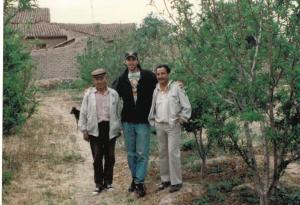
Tim with some of the peach farmers he worked with in Tarata
good buddy, Jaime, the town tour director.Jaime was very well prepared and we were soon joined by a high school group down from Cochabamba to see the historical sites. It seems that Tarata was a very important agriculture center for most of Bolivia’s history and produced at least three, and maybe as many as five, presidents. There were also many other historical figures that ran the gambit from Chaco War heroes, modern-day music composers and artist. Also, there is a lot more to the crumbling building architecture than originally meets the eye. The town now is in general decline as events have passed it by.In the afternoon we returned to Cochabamba and Tim’s apartment there. We were joined for a good Italian dinner by one of Tim’s roommates,

The “campo” in Tarata
Cathy, and after a return visit to Tio Lucas’ (the site of the previous Peace Corps party), we headed back for a short night’s sleep. We had to be at the airport at 5:00 a.m. to be first in line, as we are heading for Santiago, Chile tomorrow and one of the tickets is standby.
Monday, September 30
Not a good day!
I was sick from when we left Tim’s apartment through the flights to La Paz and Santiago and all night in a Santiago downtown hotel.
Tuesday, October 1, 1996
I’m still not feeling well today. We took a walk around central Santiago in the morning. The city appears more European than

Tim’s Tarata digs
South American. I was especially impressed by how well the people were dressed, especially the men in well-tailored, modern suits of the latest fashion.We caught a Tur Bus for Vina del Mar at midday and took a two-hour trip down the coast through some beautiful country. Unfortunately, I slept most of the way.
We checked into the four-star O’Higgans Hotel and took a walk through a part of town to the beach. Locals say the ocean water is polluted (don’t eat raw fish), but it looked pretty food to us, especially to Tim who has been in landlocked Bolivia for nine months

Tim’s room in Tarata
Tim asked an American girl, who was working at the hotel, out for drinks and dinner. I joined them for the drinks (Pisco Sours = too sweet!) and went back to the hotel for an early night.
Wednesday, October 2
The money (Peso) here in Chile is very confusing. Inflation has driven the value down to the point that all the prices are in 1,000’s. 1,000 pesos = $2.50.
We had a relaxed day today, as we spent most of our time walking around town. We visited the Vergara Estate which has been turned into a museum and public gardens. Unfortunately, the house/museum was closed due to a public employee strike, but the gardens were extensive and well-kept.
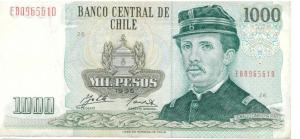
Thursday, October 3
We took the early Tur Bus back to Santiago and checked back into the Metropoli Hotel. We spent the afternoon walking around
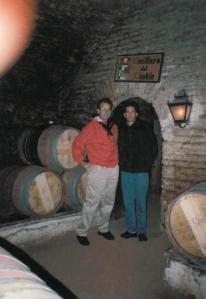
Concha y Toro Winery, Chile’s largest
the central city and took in a movie, “The Usual Suspects“. As I said earlier , Santiago has a very European feel. People appear healthy, prosperous and move with a purpose. Service is the best south of San Diego, California and there are not nearly as many beggars as there are in Boulder. We made Tim’s evening by going to the “Phone Booth Pub” and having some Guinness beer. He is taking one of the cans back to Bolivia to open on his next birthday.
Friday, October 4
We took a taxi out to Pisque, about 45 miles south of Santiago, to visit Chile’s largest winery, Concha y Toro. It drizzled the whole time, so the tour was limited to their warehouse and tasting room. We were a little put off by the fact that they charged for wine samples, but it was interesting.
We had a great seafood meal back in Santiago at the Mercado Central (no raw seafood!) and caught the evening return flight to La Paz. La Paz was beautifully lit up as we rode in from the airport to check into the Republic Hotel.

Bus station in La Paz
The city is old and worn down. Lots of traffic congestion and business suits are hard to find. The population is heavily Indian and moves at its own pace. However, the Spanish is much easier for us to understand here than in Chile.
Saturday, October 5
Tough night in a bed that collapsed around me, We spent too much time this morning buying airline ticket and finding breakfast. We also found a new hotel, as I could not spend another night in the old “cama.”
We ran into “Big” Tim, one of the guys from last Friday’s Peace Corps party in Cochabamba and have promised to meet up with him this evening.
Spent much of the day walking around La Paz. The city s in a magnificent setting, surrounded by dramatic, snow-covered

Lake Titcaca
mountain peaks that reach over 20,000′. However, it is not as attractive close up. Planning has been haphazard, roads, sidewalks, everything is either broken or under repair. Traffic is loud, stinky and combative. The people are good-natured, as they swarm across the roads and through markets.This evening we hooked up with a number of volunteers and had dinner at a very good, moderately priced Italian restaurant, Prontos. From there we headed out for a night of Cacha (some sort of dice game the volunteers learned from the Bolivians), beer, drunk locals, coca leaves and celebrating the other Tim’s 28th birthday.
Sunday, October 6
We got up fairly early to catch a bus for the four-hour ride from La Paz to Copacabana, an historic site on lake Titicaca, the highest lake in the world. I got my first real view of the Altiplano, as the ride took us past camposinos breaking up the dusty, hard soil using teams of oxen and small town festivals (it’s Sunday) involving brass bands and dancers in their finest.

Bolivian marketplace
As we did not have enough time to take a boat out to the Isla del Sol (traditionally the birthplace of the Inca race), we made do with getting to know Copacabana and it’s elaborate Moorish style church. The lake water is very clean and a turquoise blue. We had an excellent lunch of lake trout and headed back for the ride home and an early night.
Monday, October 7
Up early again and off th La Paz’s airport for a trip down to what is supposed to be Bolivia’s most beautiful city, Sucre.
In my opinion the town lives up to its reputation. It has a very Mediterranean look and feel, with white-painted buildings and red tile roofs. The municipal buildings are large, ornate and well-kept up. There is a very appealing central plaza, many parks and a large European-looking population.
We have run into as many German speakers here as we did in La Paz. For some reason this country appears to be a major

Che, the revolution lives in Sucre, Bolivia
destination spot for these travelers.We also continue to run into what we are told is a common problem, no one has and change; coin or bills. I don’t know why, but almost every business transaction, from taxis to restaurants, involves requests for smaller denominations or the running off to neighboring businesses for “cambio.”
Anyway, back to Sucre. We took a walk around town and of course once again ran into the local volunteers. We ended up having dinner with a few and watching Monday Night Football at a bar with cable.
Tuesday, October 8
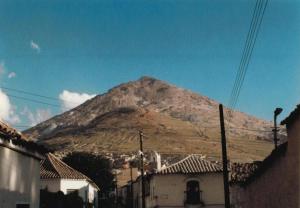
Cerro Rico, Potosi, Bolivia
Had a relaxed day. Spent a good deal of time with my book, Lost World, while sitting at the hostel or in the central plaza. We did take a hike up a hill for a view or the entire city and toured the Textiles Indigneas Museo.
The latter was very interesting display of the different types of cloth, weaving, designs and colors used by the various groups of indians in the Sucre area.
We watched Bolivia lose 0-1 to Uruguay this evening in a boring futbol match. The Bolivians appeared to to expect to lose.
Wednesday, October 9
Went back to the Textile Museum early and bought a beautiful piece of

Our guide helping us buy “explosivos” dynamite as gifts for the miners we will encounter in Cerro Rico
work. Now, what am I gong to do with it?We took a bus for the four-hour ride to Potosí. As Potosí is the highest city in the world (13,300′), the bus climbed most of the way. I was interested to see that once we gained this altitude, which is well above tree line in Colorado, there were not only trees, but the land is intensely cultivated for field crops (is all has to do with proximity to the equator).
We were able to tour their main church, Iglesia de la Merced, which had been built in pre-independence times for Spanish (white) only worship. We also had the opportunity to experience a wonderful tour of the Casa Moneda, given by an excellent guide. This is where the silver from Potosí was turned into Spanish Reales from 1545, and into Bolivian Soles and Bolivianos, after independence. The “Casa” continued to produce coins until 1909.
Thursday, October 10
Had another tough night, as sleep is difficult for those not used to this altitude. We found ourselves awakened often, gasping for air. We took a tour of the infamous Cerro Rico, where eight million Indian and African slaves died while extracting silver from 1545 to 1875. Conditions are said to have improved greatly since the miners’ rebellion of 1952 wrested control of the mines from the hands of the few owners.

Tour group for the Cerro
We started the tour in the shopping area where the independent or “Colectivo” miners purchase their necessities: dynamite, cord, coca leaves, cigarettes, alcohol, etc. We were encouraged to purchase some of the items as gifts for the miners we would find working. First time I ever bought a stick of dynamite!
We proceeded with a German couple and our guide to the hill where we arrived at a hole in the rock that served as the mine entrance, we donned helmets and rain coats and, carrying lanterns, entered into the low-ceiling passageway where we were shown figures of Cristo and “Tio” (the Devil) to whom the miners pay homage,
With the high altitude, my cold and the low, narrow space, I asked to wait
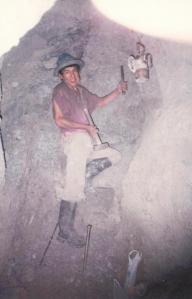
Bolivian silver miner
outside for the rest of the time the group would spend underground. I passed the next two hours baking in the sun on the side of the hill, while the rest of the group dispensed their gifts and observed the miners at work. Thank God I wasn’t born into their situation.The average miner works 12 to 16 at day, six days a week. They typically have a large family and drive themselves hard, with coca leaves keeping hunger and exhaustion at bay. On a good day a miner can make 80 Bolivianos ($16.00).We spent the evening watching a poor American film, In The Nick of Time, and enjoyed some indigenous music in the Central Plaza, which was the beginning of a week-long cultural festival.
Friday, October 11
We caught the only scheduled flight that day out of Potosi for La Paz at 8:15 a.m. At 13,000+ feet only a small craft can get up enough speed to take off. I’m glad air traffic is so reasonable within Bolivia, as this $60 ticket saves us six hours in a bus.
I’m happy to be leaving this high altitude, as the thin air and head cold have given me a constant headache.
We spent the day walking around central la Paz and checking out our last market. We also took in yet another movie, this time a repeat, Independence Day, and had dinner at yet another Italian restaurant, Pronto, with a friend of Tim’s. Lisa, who was celebrating her 25th birthday.
Saturday, October 12
The long trip home. Leaving La Paz at 7:15 a.m. but I won’t get into Denver until 10:40 p.m. It has been wonderful spending the last two weeks with Tim and sharing a part of his adventure. Unfortunately, I have been ill with amoebas and a head cold much of my time here, so I have not had the energy I would have wanted.
The Bolivian people are in general very gracious, but I find much of their country bleak and desolate. It has been a good trip, but I look forward to returning home.
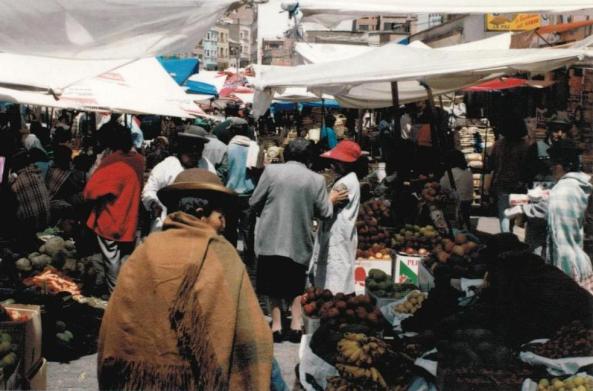 La Paz market
La Paz market
